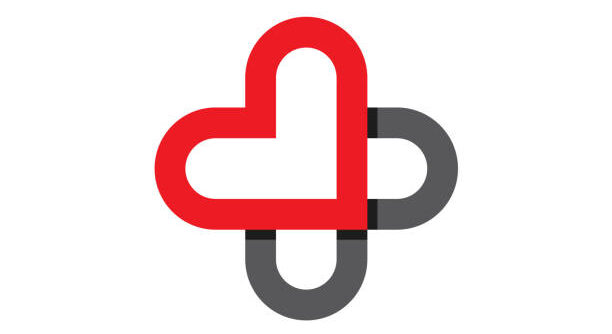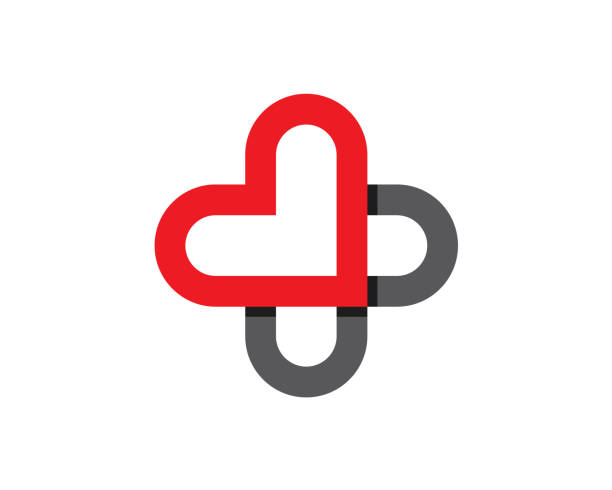
The 340B Drug Pricing Program was created in 1992 and allows hospitals and clinics that treat a large population of low-income and uninsured patients to buy outpatient prescription drugs at a discount.
It was intended to support safety-net providers and help them stretch their financial resources to serve more vulnerable patients. But since its humble beginnings, the program has grown exponentially. Between 2000 and 2020, the number of covered entity sites participating in the program grew from 8,100 to 50,000. In 2023, the 340B covered entities purchased $66.3 billion in covered outpatient drugs through the program, compared to $2.4 billion in 2005.
It’s been well-documented that drug companies have their issues with the 340B program. Several have sued the government — including Johnson & Johnson, Sanofi, Eli Lilly, Bristol Myers Squibb and Novartis — after the Health Resources and Services Administration rejected their proposed model for 340B that would provide hospitals retrospective rebates instead of upfront discounts on drugs. Judges have ruled against the drug companies in these efforts.
Some lawmakers have also targeted the program, including Senator Bill Cassidy (R-Louisiana), who released a scathing report on the 340B program in April. The report raised concerns about if the program actually benefits low-income and uninsured patients.
But there’s another stakeholder — and one that maybe doesn’t make all the headlines — that thinks the program needs change: employers.
Several employer advocacy organizations, including the National Alliance of Healthcare Purchaser Coalitions, argue that the 340B program allows hospitals to “buy low and sell high,” enabling them to purchase the medications at a significant discount and charge patients with insurance at full price.
While they’re in favor of the original intent of the program, changes need to be made, employers argue.
“I have no problem with 340B,” said Shawn Gremminger, president and CEO of the National Alliance of Healthcare Purchaser Coalitions, in an interview. “We have no problem with the fact that we know that employer money, effectively, is going into those institutions. Rural hospitals … need the money. It’s the abuse by very large, very profitable, tax-exempt institutions that I think needs to change,” specifically calling out systems like Cedars Sinai and Cleveland Clinic.
How 340B impacts employers
There are several ways the 340B program negatively impacts employers, according to Gremminger. One is that when a drug is filled through the 340B channel instead of through the employers’ PBM, the employer loses its rebates (though the rebate system is one reason large legacy PBMs are held in such poor light).
“We think rebates are stupid, and we know that PBMs hold on to a lot of them. But in the end, we are paying a discounted price, whatever the negotiated price is,” he said. “Under 340B, that doesn’t happen, because our PBM doesn’t touch it. The patient goes to the contract pharmacy, fills the script, pays their co-pay, just as they would anywhere else, but then it kind of loops back to the hospital. The hospital is able to draw down the 340B discount as revenue to them, and we are paying full price for the drug.”
Due to lost rebates, employers lose about $6.6 billion a year, according to data from the Alliance.
Gremminger’s comments about the 340B program were echoed by Bret Jackson, president and CEO of the Economic Alliance for Michigan.
“For many years of the program, it was working as intended, and I think it’s just in recent years where basically corporate healthcare has figured out how to really maximize it and take advantage of it. … They’re able to buy drugs at a low cost, I really have no problem with that. The hope is that they’re going to use that money to take care of the community that they are servicing. But what ends up happening is they’re charging more for drugs on the other end to folks like us, and are reaping just huge profits from it,” Jackson said.
Gremminger of the Alliance noted that in addition, the 340B program encourages hospital consolidation. Private practice physicians can’t participate in 340B.
“As soon as you get bought by a hospital, they’re able to get 340B discounts on your drugs,” he argued. “So particularly in the oncology space, where the drug price makes up a huge part of the revenue, there’s a profound incentive for the hospital to want to buy the oncology practice, and there’s a pretty strong incentive for the oncology practice to just become part of a hospital because the physicians get some [revenue] as well.”
In fact, more than 70% of hospital acquisitions from 2016 to 2024 had buyers that were 340B covered entities, according to Avalere Health, an advisory firm.
There are also “distorted prescribing patterns” in 340B, Gremminger declared. “Your incentive now is to buy the most expensive drug because you get the biggest discount, prescribe more of that drug and mark it up more,” he said. “And all of the evidence shows that that’s exactly what’s happening.”
A Health Affairs report found that 340B hospitals prescribe biosimilars (which are cheaper than biologics) 23 percentage points less often than non-340B hospitals.
All together, this creates a program that is “costing us billions of dollars, and there’s no benefit to the employer,” Gremminger charged. “Worse, just on a moral level, there’s really limited evidence to suggest that the program is actually working the way it was intended,” he added, noting that Cedars Sinai in Beverly Hills is a 340B hospital.
Beverly Hills is a wealthy neighborhood in Los Angeles with a median household income of $127,979.
Jackson and Gremminger both referenced the recent report from Senator Cassidy, which found that Bon Secours Mercy Health and Cleveland Clinic, both covered by 340B, generated hundreds of millions of dollars in 340B revenue and did not pass discounts directly on to patients.
Cleveland Clinic told MedCity News that the 340B program helps the organization save resources that would have been spent purchasing medications but can instead be used in providing care.
“In addition, the 340B program allows us to continue caring for patients who cannot pay for services, invest in our local communities, preserve critical subsidized health services, provide continued access to pharmacies, and offer pharmacy-related benefits to our patients,” a spokesperson said. “Cleveland Clinic is the leading provider of Medicaid services, charity care and mental health services in the State of Ohio, therefore serving a large population of rural patients and those with very limited resources.”
What the hospitals think
The American Hospital Association (AHA) told MedCity News that the 340B program is a “lifeline” for eligible hospitals, allowing them to expand access to care.
The organization attributed the growth of the program to external factors.
This includes “the decisions made by drug companies to constantly raise drug prices and introduce new drugs onto the market at record-high prices, with some critical drugs costing millions of dollars to acquire. In addition, prior Congressional action to allow rural hospitals, such as critical access hospitals to participate, broader policy decisions to move services from inpatient to outpatient, and advances in biomedical science that have enabled the use of specialty drugs in place of other clinical interventions have all contributed to growth,” said Bharath Krishnamurthy, director of policy at the AHA, in an email.
Krishnamurthy added that drug companies are spreading misinformation about the program to grow their bottom lines, giving the example of the 340B rebate model that drug companies are pushing for. For instance, last year, Johnson & Johnson said it will stop providing upfront discounts to disproportionate share hospitals participating in the 340B program for plaque psoriasis drug Stelara and blood thinner Xarelto. Instead, hospitals would have to purchase the medications at full price and then submit data to J&J to receive a rebate later. The AHA is urging HHS to reject this effort.
When it comes to the impact of the 340B program on employers, 340B Health argued during a recent press call that without 340B, employers would be paying the same amount as they are now. 340B Health is a nonprofit representing hospitals and health systems that participate in the similarly-named drug discount program.
“What they’re saying is that because hospitals get a discount on 340B, that discount should be passed on verbatim. And if it’s not, then employers are paying more than they should. So what we say to that is that that’s exactly the point of 340B. … So saying that it’s costing money is not an accurate way of saying it, because if there was no 340B, they’d be paying the same prices that they’re paying now,” said Maureen Testoni, 340B Health president and CEO.
Gremminger countered that this isn’t the case.
“I want to stipulate that we’re not trying to say it shouldn’t be around, but if 340B wasn’t around, we would be paying the negotiated prices that we get through our PBMs,” he said. “And again, there’s a whole other problem with PBMs and the fact that they are messing around with things, but there’s no question that the post-rebate negotiated price we get is lower than the totally not negotiated list price that we have to pay right now because of 340B.”
A report from the National Alliance of Healthcare Purchaser Coalitions also found that commercial prices are about 7% higher at large 340B hospitals compared to large non-340B hospitals.
The reforms employers want
There are several reforms the Alliance would like to see when it comes to 340B, but most immediately, the organization would like better transparency.
“How much am I losing as an employer? Where’s that money going? Who’s getting the money? … In my mind, frankly, we need fewer hospitals in the program. Cleveland Clinic does not need to be in 340B. Cedars Sinai does not need to be in 340B,” Gremminger argued.
He added that the scope of the program should really just be limited to safety-net providers, community health centers, rural hospitals and those treating a disproportionate share of low-income patients.
Jackson of the Economic Alliance for Michigan added that he wants the program to go back to what it was intended for.
“I don’t think they should be charging low and selling high. …. [They should] not be able to use the revenue from 340B to buy more service lines, to go out and expand their footprint,” he said. “I think that should be used for patient care.” He added that the revenue should also go to labor shortages and paying providers more money.
Photo: cagkansayin, Getty Images






